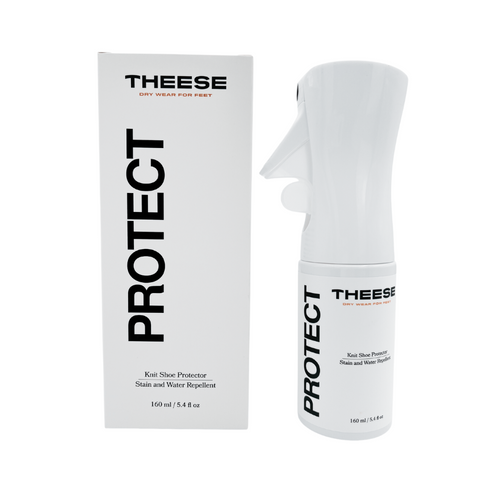In a world where climate change, plastic waste, and overproduction have become urgent global challenges, the fashion and footwear industries are under pressure to reduce their environmental impact. At THEESE, sustainability is more than a buzzword—it’s a fundamental part of how we design, develop, and deliver our waterproof shoes.
Our flagship models—PURPOSE and FLOW STATE—are not just engineered for performance and comfort; they also reflect a deep commitment to eco-conscious manufacturing, ethical sourcing, and closed-loop production systems. From materials to packaging, every step of our process is designed to minimize waste, lower our carbon footprint, and promote a sustainable future.
This article explores how THEESE integrates sustainable practices in waterproof shoe production, and how that commitment impacts our environment, customers, and industry at large.
1. Rethinking Materials: Recycled, Renewable, and Responsible
A. Recycled Plastic Bottles & Ocean Waste
We repurpose single-use plastic bottles and marine waste into high-performance textiles that form the upper body of our waterproof shoes. This helps reduce the massive amount of plastic entering landfills and oceans each year.
✔ Result: Less virgin plastic, cleaner oceans, and breathable, durable uppers for THEESE sneakers.
B. Natural Rubber and Biodegradable Alternatives
Instead of relying on synthetic, petroleum-based rubber, THEESE uses ethically sourced natural rubber for outsoles, ensuring:
-
Lower carbon emissions during extraction
-
Improved biodegradability
-
Safe wear for extended outdoor use
We are also experimenting with plant-based foam and biodegradable sole compounds that retain durability while reducing long-term environmental harm.
C. Organic and Sustainable Textiles
The linings and components inside PURPOSE and FLOW STATE are made from:
-
Organic cotton
-
Recycled polyester
-
Vegan-friendly leather alternatives
These materials consume less water, avoid harmful dyes, and reduce textile industry waste.
2. Minimizing Waste in the Manufacturing Process
A. Lean Manufacturing Principles
Our facilities operate under lean production systems, designed to reduce overproduction, material waste, and energy usage.
✔ Outcome: Each pair of THEESE shoes is made with precision—no surplus, no excess, just what’s needed.
B. Digital Cutting & 3D Modeling
We utilize 3D shoe modeling and digital fabric cutting, which results in:
-
Near-zero material waste
-
More accurate fits
-
Less trial-and-error in prototyping
This leads to less fabric offcut and fewer prototypes discarded during design testing, reducing production footprint.
C. Non-Toxic Waterproofing Techniques
THEESE uses PFC-free waterproof membranes that are safe for both humans and aquatic ecosystems. Our lamination process bonds membranes to fabrics without harmful glues, ensuring:
-
Breathable yet fully waterproof linings
-
Long-lasting performance with lower chemical impact
3. Reducing the Carbon Footprint of Shoe Production
A. Localized Production & Green Facilities
Our manufacturing partners operate energy-efficient factories powered by renewable energy sources wherever possible. We also aim to produce close to our key distribution zones, reducing the emissions associated with global freight.
✔ We are actively working toward Scope 3 emission transparency for full lifecycle accountability.
B. Circular Economy Focus
THEESE promotes closed-loop thinking by:
-
Designing products with disassembly in mind (to allow future recycling)
-
Using components that can be repurposed or biodegraded
-
Offering recycling return programs in future collections
Our goal is to keep every pair of THEESE shoes out of landfills and in the circular loop.
4. Packaging That Protects the Planet
A. Recycled & Recyclable Packaging Materials
Our shoe boxes are made from 100% post-consumer recycled cardboard, printed with water-based inks, and designed to be plastic-free.
B. Minimalist Packaging Design
We use no excess filler, plastic bags, or foam, reducing packaging weight and improving transport efficiency.
✔ Outcome: Reduced shipping emissions and waste for every online order.
5. Ethical Labor and Transparent Supply Chains
A. Fair Wages and Safe Conditions
We only work with suppliers and factories that comply with international labor laws, ensuring fair wages, gender equality, and safe working environments.
B. Supplier Audits & Traceability
We conduct routine audits of our supply chain and aim for full transparency on:
-
Material origin
-
Factory location
-
Carbon output by process
✔ By knowing where and how our shoes are made, we’re able to optimize for both ethics and efficiency.
6. THEESE vs. Traditional Shoe Brands: Sustainability at a Glance
|
Feature |
THEESE Waterproof Shoes |
Traditional Footwear Brands |
|
Recycled Materials Used |
✅ Yes |
❌ Rarely |
|
PFC-Free Waterproofing |
✅ Yes |
❌ Often Used |
|
Sustainable Rubber or Foam |
✅ Yes |
❌ Petroleum-Based |
|
Biodegradable or Plant-Based Textiles |
✅ In Progress |
❌ No |
|
Recyclable Packaging |
✅ 100% Recycled |
❌ Plastic Fillers |
|
Transparent Supply Chain |
✅ Audited & Mapped |
❌ Opaque |
|
Circular Economy Practices |
✅ Developing Programs |
❌ Linear Model |
7. Customer-Focused Sustainable Services
We not only build sustainability into our products, but also offer customer-first policies that reduce unnecessary returns and minimize waste:
-
✅ Free Shipping – With carbon-conscious delivery partners
-
✅ Free Exchanges & Easy Returns – Reduces multiple purchases for sizing
-
✅ Fit Guides & Foot Measurement Tools – Ensures you get your correct size the first time
✔ Less return shipping = smaller environmental footprint.
8. What’s Next: THEESE’s Sustainable Footwear Vision
We’re continuously innovating in areas such as:
-
Bio-based membranes that offer waterproofing from plant-derived polymers
-
Mushroom leather and algae foam soles
-
Fully recyclable sneakers using mono-material construction
-
Carbon-negative manufacturing goals by 2030
Our vision is to create fully closed-loop waterproof footwear that supports your lifestyle and the planet equally.
Conclusion: Every Step Matters
At THEESE, we believe sustainability is a responsibility—not a trend. By rethinking the way waterproof shoes are made, packaged, and delivered, we’re helping build a future where style, performance, and environmental stewardship walk side by side.




